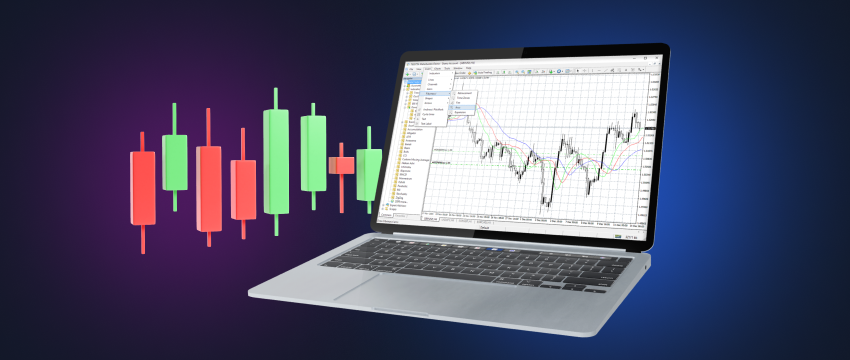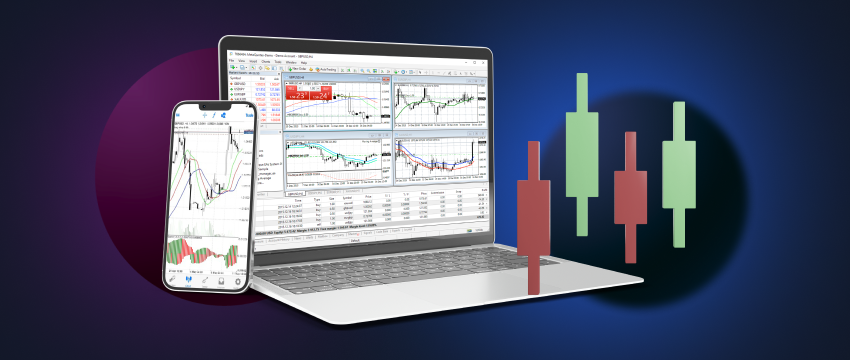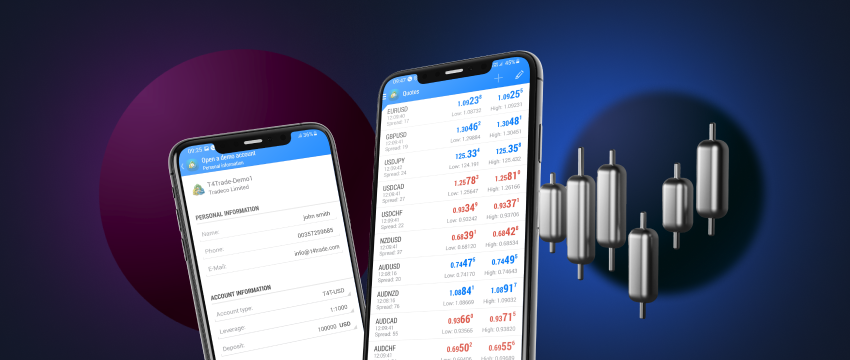The forex market is not just big, it’s incredibly active, with traders from countries across the globe seeking to make a profit from trades, multiple times a day. Successfully navigating this space is largely dependent on the strategy you adopt, the level of risk you’re willing to incur, and how much time you have to invest in trading. Two of the most popular approaches to executing investments are day trading and swing trading. In this article, we’ll explore what both of these entail.

1. Swing trading
Swing trading is a strategy that typically seeks to capture and capitalize on short to medium-term price movements within a broader trend. Unlike a day investor, a swing investor will usually hold onto a position for numerous days or weeks, and possibly even months.
Also in contrast to day trading, swing trading is less demanding in terms of time commitment. This makes the strategy better suited for traders who’d like to dabble in the market while still managing another more full-time profession. Swing investing also offers a more favorable risk-reward ratio considering the length of time positions are held onto in comparison to day investing.
In fact, one of the major distinctions between the two strategies is time horizon. Swing traders tend to take on a more patient approach, analyzing charts on a daily or weekly basis to identify trends and entry/exit points. This makes for a more relaxing way to invest, unlike day trading which requires continuous monitoring of the market through an entire trading day.
As far as analysis is concerned, swing traders make use of technical analysis primarily, but will apply fundamental analysis if the need arises. This is because influences like geopolitical tensions, economic releases, and industry sentiment, may impact asset prices. Some of the most commonly used indicators used in technical analysis include moving averages, relative strength index (RSI), momentum indicators, support & resistance, stochastic oscillators, moving average convergence divergence (MACD), and others.
In terms of risk management, swing traders will adopt certain techniques to safeguard their capital. This includes stop-loss or take-profit orders to limit losses.
2. Day trading
Day trading involves entering and exiting frequent short-term investments throughout a trading day. The positions are usually closed by the end of the trading day to avoid overnight risk. Multiple positions may be executed in a single session, so this approach requires intense focus, quick thinking on your feet, and the ability to react to unexpected or changing market conditions at the drop of a hat.
A day trader is typically someone with trading expertise to is able to deal with the fast-paced and volatile nature of the forex market. They are disciplined and rely on rationale and analysis to execute their strategy, rather than impulsive decision-making driven by raw emotion. As far as the time horizon is concerned, day traders need to be fully engaged during market hours. This is because traders are executed within seconds, minutes, or hours, which requires close attention to real-time market data and news.
Day traders rely heavily on technical analysis, making use of intraday charts, indicators, trends, and patterns to execute investments. Fundamental analysis plays a very limited role. The rapid pace at which positions are executed using a day trading approach makes this form of investing considerably high-risk. Combined with the use of leverage, gains as well as profits can be magnified. This requires that day traders have a high tolerance for risk, and can manage stress in a way that doesn’t hinder their investing outcomes. Additionally, day traders will make use of varied risk management tools to protect their capital. This includes:
- Stop loss orders
- Position sizing
- Portfolio diversification
- Monitoring of economic events or market-moving releases
- Daily loss limits

Benefits of ongoing learning
Regardless of what strategy you choose, be it swing trading or day trading, having a solid understanding of the forex market first is crucial. One needs to be mindful of the intricacies that come with forex investing as well as the constant changes the market undergoes. Other benefits of ongoing learning include:
- Gaining better awareness of the market and the impact that economic indicators and global events can have on currency prices.
- Becoming more experienced in how to manage the risks associated with both swing and day trading. This is important to protect one’s money.
- Acquiring the skills needed to apply technical and fundamental analysis. Traders can learn how to interpret charts, indicators, etc. This makes for more accurate speculation.
- Getting a better handle on one’s psicología del trading. With increased knowledge comes confidence, skill, and focus. This increases the likelihood of more positive trading outcomes.
Ways to gain a forex trading education:
There are many ways to acquire a forex trading education. The internet is jam-packed with online resources, many of them available to use for free. Brokers are also usually a great source of information covering a wide range of trading-related topics. This includes T4Trade whose Academy provides traders with access to ebooks, podcasts, videos-on-demand, and more. These resources are designed to provide traders with crucial insights, useful tips, and data related to the trading strategies mentioned herein.
Another valuable way to learn more about trading in general is through a demo trading account. A demo account provides a trader with a simulated trading environment that mimics real-life trading and market conditions. It offers a useful way to implement your choice of strategy, identify any strengths or weaknesses, and assess outcomes.
A demo account also enables you to use virtual funds to enter and exit positions, without putting your own capital in jeopardy. You can practice using technical and fundamental analysis, in order to make more informed investing decisions. As time goes by, you’ll find yourself gaining the confidence required to move to live investing. But before you do this, be sure that you’ve chosen the trading strategy that best aligns with where you’re at in your trading journey.
How to establish which strategy is best suited for you
Your choice of strategy is of vital importance as it will drive your trade performance and ultimately, profitably (or lack thereof). Whether you choose to become a swing trader or a day trader should be based on 5 key factors, your trading objectives, how much risk you want to take on, availability of time, budget, and expertise. In particular, ensure that you create a plan in which you definitively define your objectives, be this seeking quick profits or more long-term return on investment.
Ascertain how much capital you have to invest in trading, i.e., your budget, and how much of this capital you’re prepared to risk losing. Ensure the strategy you select is suited to the level of knowledge or trading education you’ve gained.
Don’t choose a strategy you aren’t equipped to manage effectively. If you’re at the start of your journey, start off small until you have acquired the skills necessary to take on more risk. And finally – ensure you are well aware of the risks that come with forex trading and ensure you use a range of techniques to manage them.

El trading con T4Trade
T4Trade offers traders top-tier trading conditions and a flexible trading environment through which they can access more than 300+ financial instruments from 6 asset classes. This includes shares, indices, forex, futures, metals and commodities. T4Trade also offers competitive spreads, flexible leverage, multiple account types, quick withdrawals and deposit funds, and fast execution of orders. Traders can also contact a dynamic multi-lingual client support team 24/5 to get assistance with any investing-related issues or questions.
EXENCIÓN DE RESPONSABILIDAD: Esta información no se considera asesoramiento ni recomendación para invertir, sino que es solamente una comunicación de marketing.




